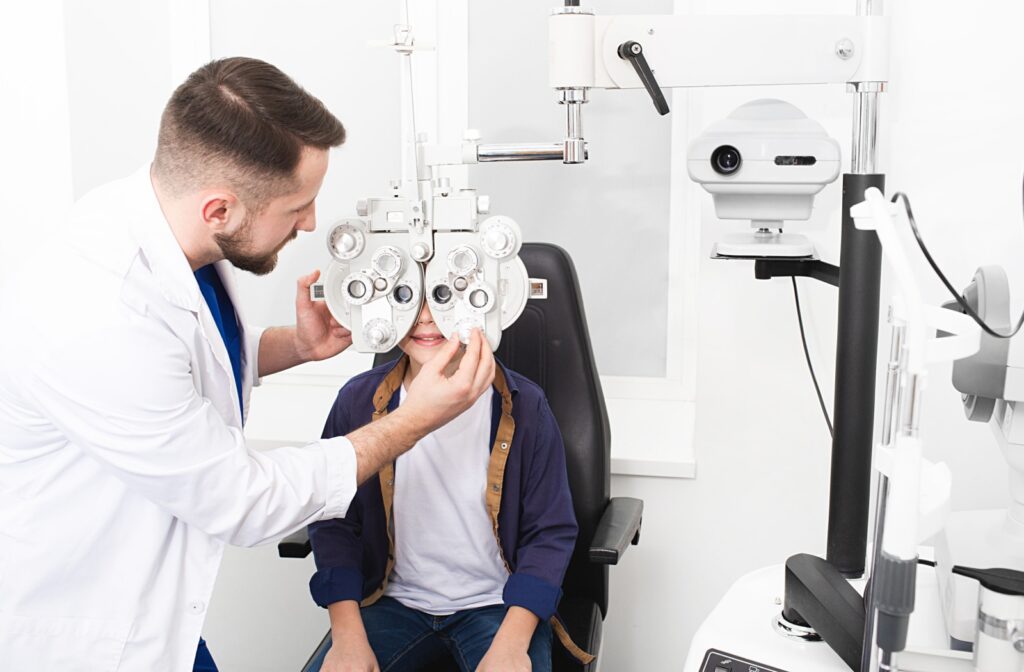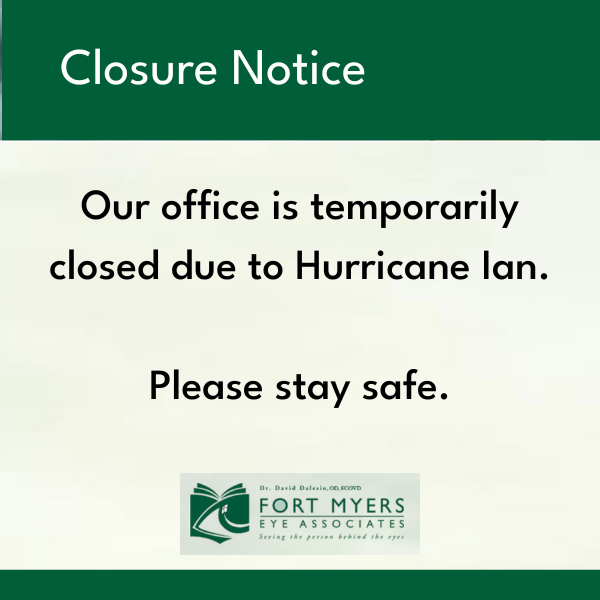Myopia (or nearsightedness) is on the rise among children and adolescents, leaving many parents wondering how they can protect their child’s vision in the long run. Several factors can cause myopia to get worse, including:
- Genetics
- Eye growth during childhood and adolescence
- Modern lifestyles and screen time
- Poor visual and lifestyle habits
If left to worsen over time, myopia can go beyond needing glasses and may lead to more severe eye problems. These risks highlight the importance of managing myopia progression. Fortunately, modern medical advancements provide several ways that we can help slow or stop your child’s myopia progression.
What Is Myopia?
Myopia is a common refractive error in which distant objects appear blurry, while close objects remain clear. It happens when the eye grows too long or the cornea is too curved, causing light to focus in front of the retina rather than directly on it.
Symptoms of myopia often appear during childhood and can include difficulty seeing the whiteboard at school, squinting, or sitting too close to the television. Myopia often worsens during childhood and adolescence, while the eyes are still developing.
Causes of Myopia
Understanding what causes myopia to progress is the first step toward managing it. Several contributing factors come into play, many of which are a mix of biology, environment, and daily habits.
Genetics
If you or your partner are nearsighted, your children are more likely to develop myopia. Research shows that children with one or both parents who have myopia are significantly more likely to inherit this condition. While we can’t change genetics, it’s a crucial factor to consider when planning regular eye check-ups for kids.
Eye Growth During Childhood & Adolescence
The eye undergoes significant growth during the childhood and teenage years. When the eye grows too quickly or keeps elongating, this exacerbates myopia. Rapid growth before puberty can also accelerate vision worsening during these formative years.
Modern Lifestyles & Screen Time
Today’s digital age has undeniably changed how children spend their time, with tablets, phones, computers, and televisions becoming routine fixtures in daily life. Prolonged near work (like reading or screen usage) has been strongly linked to myopia progression and can increase the risk of developing myopia by up to 80%.
Poor Visual & Lifestyle Habits
Poor eye habits can compound the issue. Whether it’s spending hours slouching over a phone or reading in dim light, these practices can significantly strain a growing child’s eyes. Additionally, an absence of regular breaks when focusing on close-range tasks can contribute to vision deterioration.

Can You Stop Myopia from Getting Worse?
While myopia cannot be reversed, its progression can be managed effectively with lifestyle adjustments and early intervention.
Healthy Eye Habits for Healthy Eyes
Encouraging healthy eye habits doesn’t just help maintain clear vision in the short term. It’s also a preventive effort to minimize future risks of myopia-related complications.
- The 20-20-20 rule: Teach your child to take regular breaks. For every 20 minutes spent focusing on a screen or book, they should look at something 20 feet away for 20 seconds.
- Spend time outdoors: At least 1–2 hours of outdoor time each day has been shown to help protect against myopia progression. Natural light is vital for eye health.
- Maintain balanced lighting: Ensure your home is well-lit when kids are reading or doing homework. Reading in poor light strains the eyes unnecessarily.
- Set limits on screen time: Balance technology use with other activities and set rules for prolonged screen use, like encouraging frequent breaks.
Myopia Management Options
If your child has been diagnosed with myopia, don’t worry. While myopia progression can feel overwhelming, several effective management options are available to prevent it from worsening.
Prescription Glasses & Contact Lenses
Corrective lenses are one of the most straightforward and most accessible solutions. Updated prescriptions help your child see clearly, and specialized options can slow further elongation of the eye.
Orthokeratology (Ortho-K)
Ortho-k involves wearing specially designed gas-permeable contact lenses overnight to reshape the cornea. This temporary correction allows your child to see clearly without glasses or contact lenses during the day and has been shown to slow down myopia progression.
Multifocal Contact Lenses
Multifocal contact lenses offer an effective way to correct vision while simultaneously managing the forces contributing to myopia. These lenses help balance focus and reduce the elongation of the eye.
Atropine Eye Drops
Low-dose atropine eye drops have gained popularity for managing myopia progression. When used consistently, these drops can slow eye growth while preserving clear vision.
Caring for Your Child’s Vision with Fort Myers Eye Associates
At Fort Myers Eye Associates, we understand how important your child’s vision is to their everyday life and future success. That’s why our team specializes in identifying, treating, and managing myopia with a tailored approach that fits your family’s unique needs.
If you’re concerned about your child’s vision or want to learn more about slowing myopia progression, book an appointment with us today. Together, we can help safeguard your child’s eyesight.





